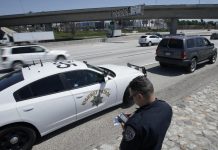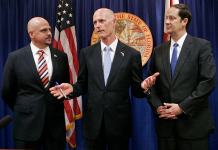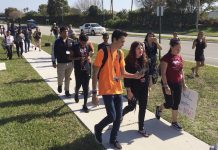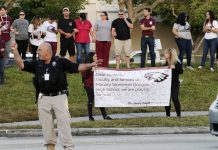
Like it or not, high school students are part of the school safety discussion
There is a serious discussion going on in and around America’s schools right now. That much we already know.
Politically, it seems that nearly everyone has an opinion on how to make schools safer. There is talk of gun restriction, talk of mental health initiatives, and talk of enabling teachers in more places to carry firearms. This is not particularly new, and has popped up around many tragedies not remotely limited to the horrors in Parkland.
What is a bit new, and a bit striking about this round of discussions is that it is not simply addressing issues around schools and students. The students are in many ways the ones driving the conversation. The survivors of the shooting at Marjory Stoneman Douglas High School made their opinions known on a national level, and schools across the country have picked up the torch with events like the national school walkout on Wednesday.
The walkouts are being organized by a specific group. The organizing force behind it is the same behind the 2017 Women’s March that coincided with the inauguration of President Donald Trump.
Their intentions are clear on their website. They wish to “protest Congress’ inaction to do more than tweet thoughts and prayers in response to the gun violence plaguing our schools and neighborhoods. We need action. Students and allies are organizing the National School Walkout to demand Congress pass legislation to keep us safe from gun violence at our schools, on our streets and in our homes and places of worship.” The walkout is directly about addressing the amount of guns in our society currently. These intentions are not hidden, either from the students involved or from the public at large. Anybody can go to the website and read them.
There are, of course, other potential ways to help lessen the threat of violence in schools. Students are free to join any organization they wish, such as Young Republicans type organizations, that advocate for solutions they find more palatable. Likewise, any students involved in Wednesday’s march are free to change their minds on political issues as they read more and learn more if that’s where their mind suggests they ought to go.
Attendance at the walkout was not mandatory. Agreement with the underlying idea behind the walkout was also not mandatory. In fact, consider that these are ideas being suggested to students by adults, and these are high school students. Few people are more likely to actively question what a well-meaning adult tells them than a teenager.
While there are understandable concerns about adults in positions of relative authority imposing their politics on impressionable students, it is important that these young people become politically active in some way. The days of polite and quiet politics have passed, giving way to a world where political discussions are commonplace for good and for ill. In many ways, our old mantra of never discussing politics outside of polite company is out the window.
We can worry about children being used as political tools, but how often do we turn inward and look at ourselves in that way? Is the era of what the president so vehemently calls “fake news” not making pawns of adults every single day in just about every possible political angle? The current issue is in many ways about schools and students. How are adults who have been out of school for years more qualified to opine on it than students who have to spend their weekdays in these schools?
Rest assured that the air of Parkland hangs over every high school in the United States at the moment. Nobody has to live with this news more than the students themselves. It is there every day, and often at home with concerned parents who realize that there is little difference between Parkland, FL and their own neck of the woods. While the rest of us are having conversations about schools, the students are inside the buildings. Should they not be able to make their voices heard?
It is concerning to have people so young taking part in such a big conversation, but it is also necessary. Yes, of course these kids will have to learn to be discerning in what facts they take from news stories, and how they take in information about the world at large. That is a difficult lesson to learn, as we’re all demonstrating.
Welcome to the new world. Advances in communication and technology have led to an instant, confusing, and at times misleading news cycle. There is talk of biased media, media biased in the opposite direction, outright falsehoods passed off as information, and the dangers of social media. We are all navigating this jungle whether we like it or not, and high school aged students are quite actually growing up in it.
This is not to say there is a class students can take, or even one that ought to be offered. This is all still new ground. Still, it all has to begin somewhere. Where better than high school?
Anyone under eighteen is making their voice heard in the only way they possibly can. As non-voters, they cannot use the polling place the way the rest of us can. Students do not have the spending power to “vote with their wallets” either. Their actual voice is their only voice, and in a society that values free speech there is no argument against using that.














